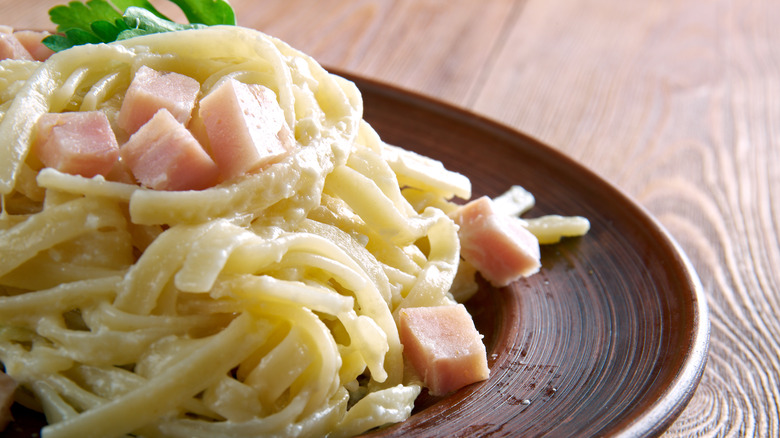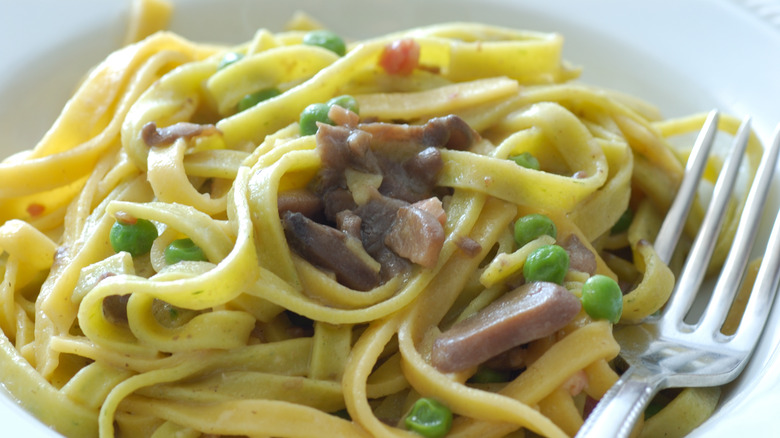The Truth About Fettuccine Alla Papalina
While many of those who appreciate Italian cuisine are familiar with carbonara, cacio e pepe, and fettuccine alfredo, fettuccine alla papalina is not an especially well-known dish. This is most unfortunate, because fettuccine alla papalina is downright delicious: creamy, studded with pieces of ham or prosciutto, and laden in a rich, silky sauce. While similar to the other famous Roman pastas, it's slightly more refined — instead of the bracing pecorino and guanciale, for example, prosciutto and Parmigiano yield a gentler, more delicate flavor.
Eugenio Pacelli, who became Pope Pius XII, is part of the inspiration behind this dish. The name was in regards to the pope himself — hence "papalina," which Garrubbo Guide notes is a reference and direct translation of "skullcap." Therefore, the dish – loosely translated — means "the pope's pasta." The story goes that in the 1950s, amid the sheer richness of carbonara, the pope asked a Vatican chef to create a more "aristocratic" version of the cherished dish. In the new version, prosciutto was the protein (replacing guanciale), Parmigiano Reggiano was the cheese (replacing pecorino), and garlic and onion were added, along with butter. The egg remains — usually just the yolk. The pasta was fettuccine from Ciociaria, instead of spaghetti. The Pasta Project also notes that the pasta changed from semolina to egg-based. Each facet of the revered dish was slightly modified, resulting in the lighter version that soon gained immense popularity throughout Rome (via La Cucina Italiana).
What are other variations of the dish?
This tale may less than completely accurate, however. A book by Livio Jannotti claims that the recipe should be traced to Cesaretto Simmi around 1935. Interestingly enough, this version of the story also involves the same individual for inspiration (via La Cucina Italiana), though he was not yet pope at the time. Regardless of its origins, the dish is absolutely scrumptious. Many question the particular type of prosciutto that should be included: raw or cooked (crudo or cotto). Some bypass this distinction and just use leftover ham. In addition, many variations also include peas for a pop of color, brightness, and vegetal flavor. Some also involve mushrooms and perhaps cream. Another variation would be to simply omit the ham entirely, thereby rendering a vegetarian version of fettuccine alla papalina.
Anna Maria Volpi notes that one of the originators of the dish noted that fettuccine was opted for in place of other pastas because bucatini was thought to be "low class." How wild (and bizarre) is that? It's also so photogenic, and the color scheme is in line with the colors of the Italian flag. Next time you're in the mood for pasta, pick up some fettuccine (or make some from scratch), some Parmegiano Reggiano, and some prosciutto (the other ingredients are all essentially kitchen staples), and take a quick taste trip to Rome. The dish comes together in no time.

